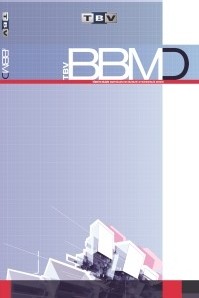Yaramaz E-Postaların Süzülmesinde, Karar Destek Makineleri, Naïve Bayes ve Bellek Tabanlı Öğrenme Yöntemlerinin Karşılaştırılması
Bu makalenin amacı, yaramaz (spam) epostaları, normal e-postalardan ayırma süreci için, karar destek makineleri (Support Vector Machines - SVM), bellek tabanlı öğrenme (Memory Based Learning - MBL) ve Naïve Bayes (NB) yöntemlerinin karşılaştırmalı değerlendirmesini yapmaktır. Yaramaz e-posta-ların süzülmesinde kullanılan yöntemleri karşılaştıran birçok çalışma olmasına karşın, bu çalışmaların büyük çoğunluğu, farklı veri kümeleri kullandıklarından karşılaştırılabilir nitelikte değildir. Bu çalışmada, SVM, MBL ve NB yöntemleri karşılaştırılırken, herkesin erişimine açık olan ortak bir derlem (corpus) olan LINGSPAM derlemi kullanılmıştır. MBL ve NB yöntemleri, önceki çalışmalarda bu veri kümesi üzerinde sınandığı için, önceki deneylerden elde edilen en iyi parametreler ufak değişikliklerle kullanılmıştır. Ancak SVM yönteminin en iyi sonucu vermesini sağlamak için çok sayıda deney yapılmıştır. Çalışmamızda bir e-postanın, yaramaz olarak tanınması durumunda, bu e-postaya nasıl davranılacağına ilişkin senaryo önerileri verilmiş ve gerçeklenen sınıflandırıcıların hatalı çalışması durumunda ilgili senaryolara göre ortaya çıkabilecek hataların bedeli göz önüne alınarak bu üç sınıflandırma yöntemi değerlendirilmiştir. Ortaya çıkan sonuçlarda, SVM yönteminin hata bedelinin sıfır olduğu ya da yüksek olduğu senaryolar için başarımının diğer yöntemlerden daha iyi olduğu görülmüştür. Ancak hata bedelinin çok yüksek olması durumunda ise NB yöntemi en iyi sonucu vermiştir.
Anahtar Kelimeler:
Yaramaz, E-Posta, Naïve Bayes
Yaramaz E-Postaların Süzülmesinde, Karar Destek Makineleri, Naïve Bayes ve Bellek Tabanlı Öğrenme Yöntemlerinin Karşılaştırılması
This paper presents a comparison of support vector machines (SVM), memory-based learning (MBL) and Naïve Bayes (NB) techniques for the classification of legitimate and spam mails. Although there are a number of methodcomparative studies regarding spam mail filtering, most of the studies are tested on separate data sets. In order to evaluate the effectiveness of SVM, MBL and NB methods, we have used a common publicly available corpus (LINGSPAM). As MBL and NB methods are previously tested with this corpus, the obtained best parameters are used in the experiments with few changes. On the other hand, intense experiments are made to find the best attribute dimensions with SVMs. Results show that SVM has significantly better performance for no-cost and high-cost cases, but NB performs best when the cost is extremely high.
Keywords:
Yaramaz, E-Posta, Karar Destek Makineleri,
___
- 1 Horvitz. 1998. “A Bayesian Approach to Filtering Junk E-Mail”. Learning for Text Categorization – Papers from the AAAI Workshop, pages 55–62, Madison Wisconsin. AAAI Technical Report WS-98-05.
- [2] Androutsopoulos I., Koutsias J., Chandrinos K.V., Paliouras G., Spyropoulos C.D., 2000. “An Evaluation of Naive Bayesian Anti-Spam Filtering“. Proceedings of the workshop on machine Learning in the New Information Age, 11th European Conference on Machine Learning (ECML 2000), Barcelona, Spain, pp. 9-17.
- [3] Sakkis G., Androutsopoulos I., Paliouras G., Karkaletsis V., Spyropoulos C.D., Stamatopoulos P., 2003, “A Memory-Based Approach to Anti-Spam Filtering for Mailing Lists”, Information Retrieval 6(1), 49-73, Kluwer Publishing
- [4] Xavier Carreras, Lluís Marquez, Boosting Trees for Anti-Spam Email Filtering (2001), Proceedings of RANLP-01, 4th International Conference on Recent Advances in Natural Language Processing
- [5] Drucker H., Wu D., Vapnik V.N., 1999. “Support Vector Machines for Spam Categorization”, IEEE Transactions On Neural Networks, pages 1048-1054.
- [6] Karl-Michael Schneider, A Comparison of Event Models for Naive Bayes Anti-Spam EMail Filtering, 10th Conference of the European Chapter of the Association for Computational Linguistics (EACL 03), pp. 207-314, 2003.
- [7] Androutsopoulos I., Paliouras G., Karkaletsis V., Sakkis G., Spyropoulos C.D., Stamatopoulos P., 2000, “Learning to filter Spam E-Mail: AComparison of a Naïve Bayesian and a Memory-Based Approach ”, Proc. of the workshop on Machine Learning and Textual Information Access, 4th European Conference on Principles and Practice of Knowledge Discovery in Databases, France
- [8] Duda, R.O. and P.E. Hart. 1973. “Bayes Decision Theory”. Chapter 2 in Pattern Classification and Scene Analysis, pages 10–43. John Wiley.
- [9] Chih-Chung Chang and Chih-Jen Lin, LIBSVM : a library for support vector machines, 2001. Software available at http://www.csie.ntu.edu.tw/~cjlin/libsvm
- [10] Vapnik, 1995. “The Nature of Statistical Learning Theory”. Springer-Verlag, 1995.
- [11] J. C. Platt, 1998. “Sequential minimal optimization: A fast algorithm for training support vector machines,” in Advances in Kernel Method: Support Vector Learning, Scholkopf, Burges, and Smola, Eds. Cambridge, MA: MIT Press, pp. 185–208.
- [12] E. Osuna, R. Freund, F. Girosi, 1997. “Improved training algorithm for support vector machines,” in Proc. IEEE NNSP’97.
- ISSN: 1305-8991
- Başlangıç: 2005
- Yayıncı: Türkiye Bilişim Vakfı
Sayıdaki Diğer Makaleler
Bilişimde Özenli Türkçenin Önemi
Model Tabanlı Yapay Sinir Ağı Kullanarak Geliştirilmiş bir Kenar Çıkarma Motoru
G. ERYİĞİT, C. TANTUĞ, E. ADALI
Dampster'in Birleştirme Kuralı ile Sınıflandırma Algoritmalarının Birleştirilmesi
Bir Soru Cevaplama Sistemi: BayBilmiş
Bulanık Mantık Temelli Esnek Sorgulama Aracı
Anlamsal Web için Bilgi Sistemi Altyapısı
M. O. ÜNALIR, Ö. ÖZTÜRK, T. ÖZACAR
Öznitelik İzdüşümü Kullanarak Artımlı Biçimde Sınıflandırma Öğrenilmesi
